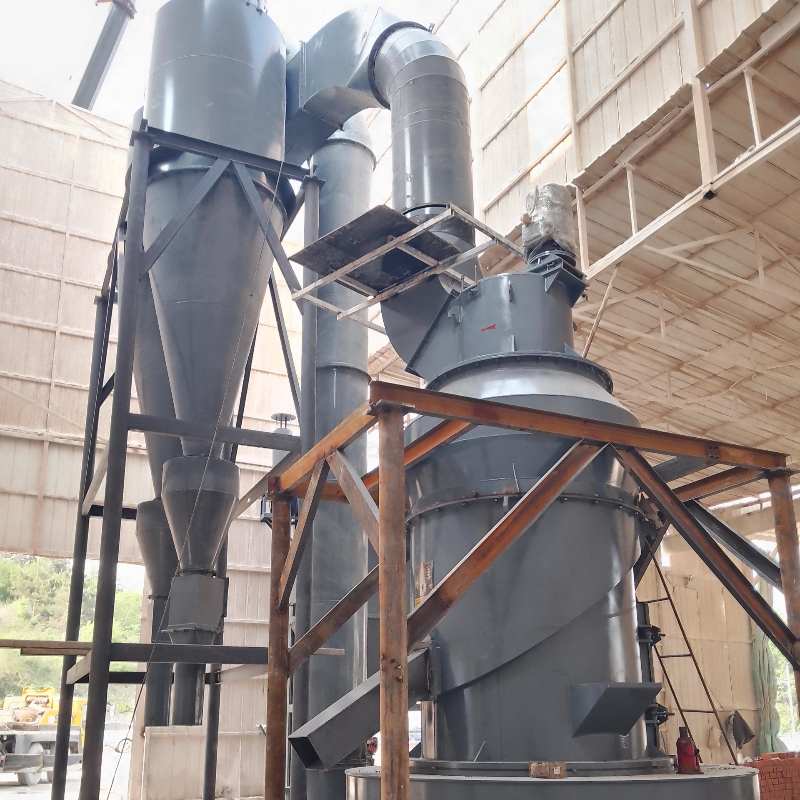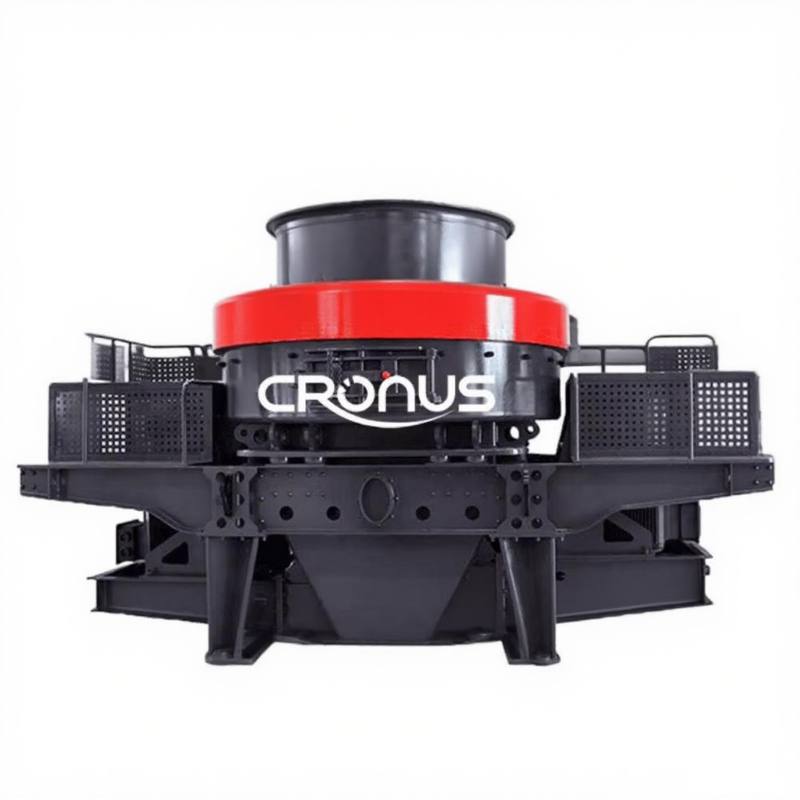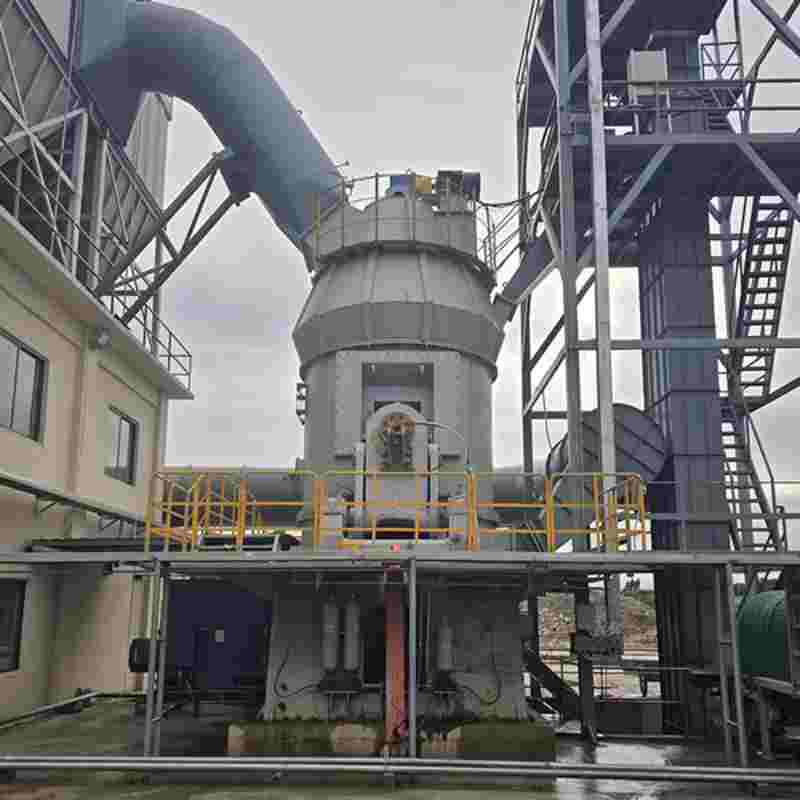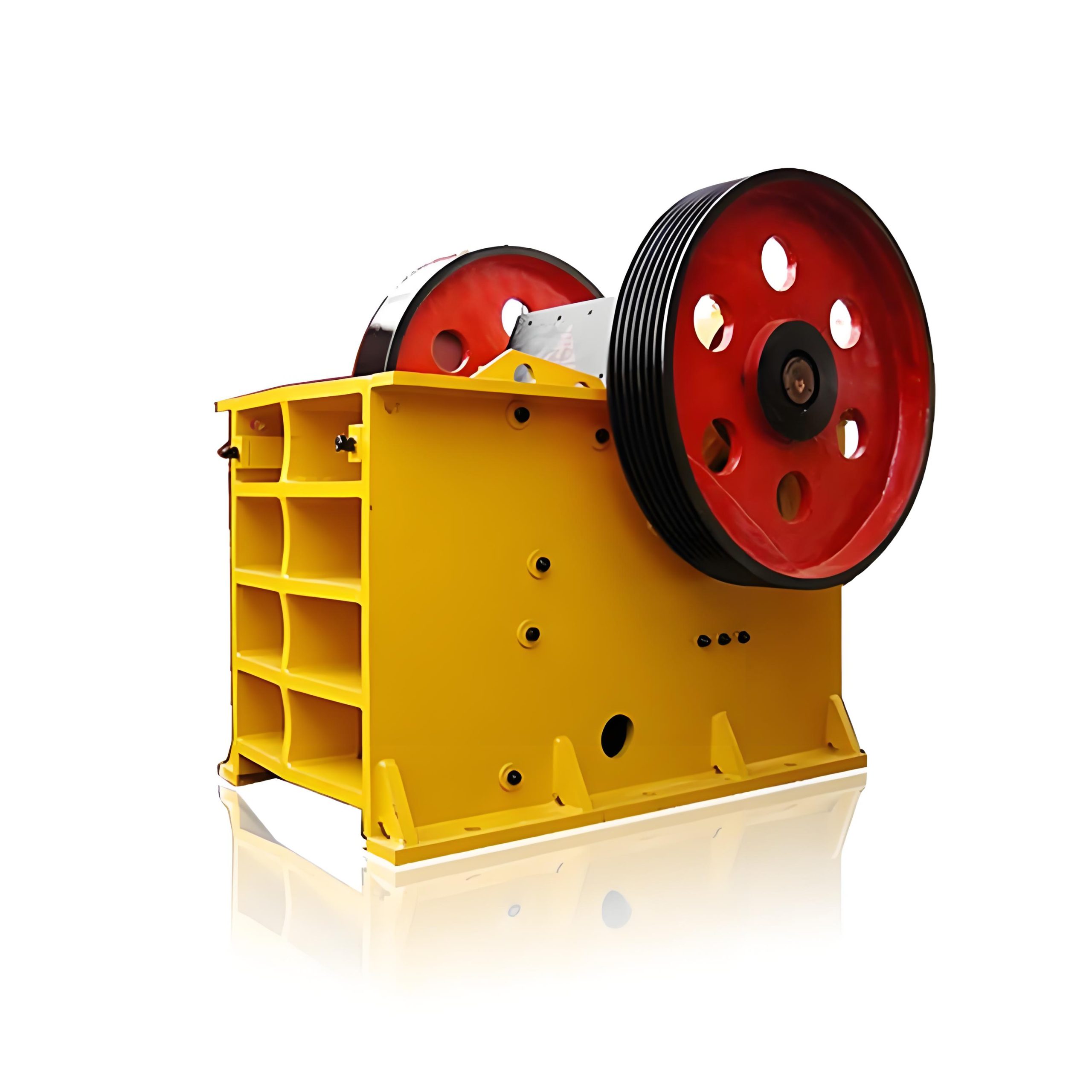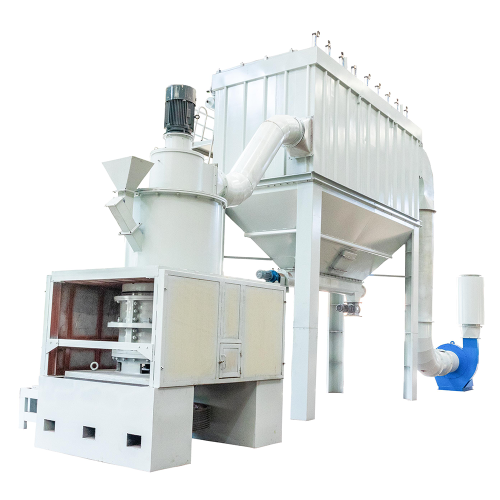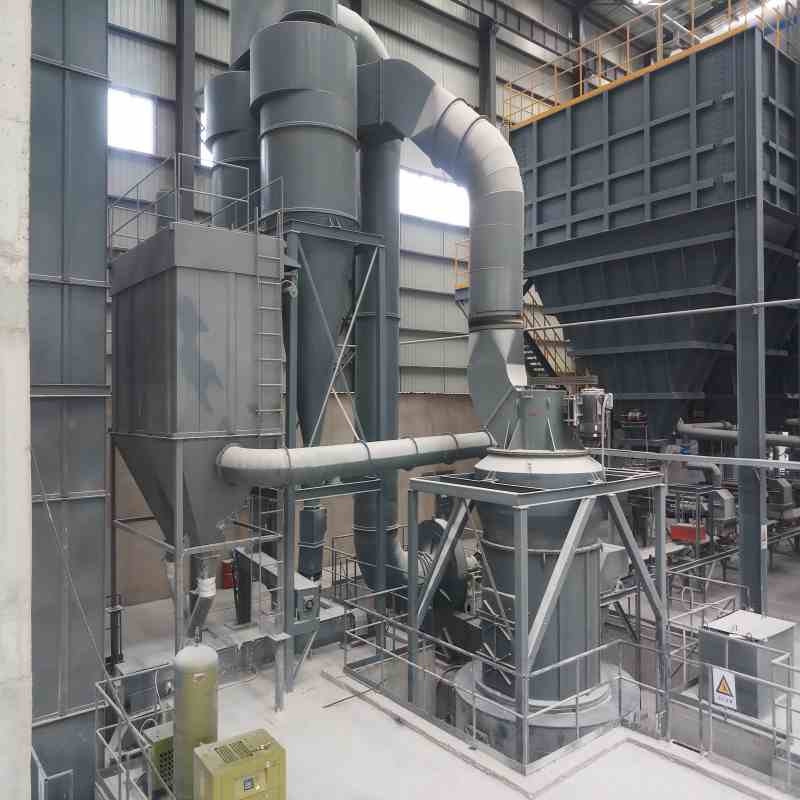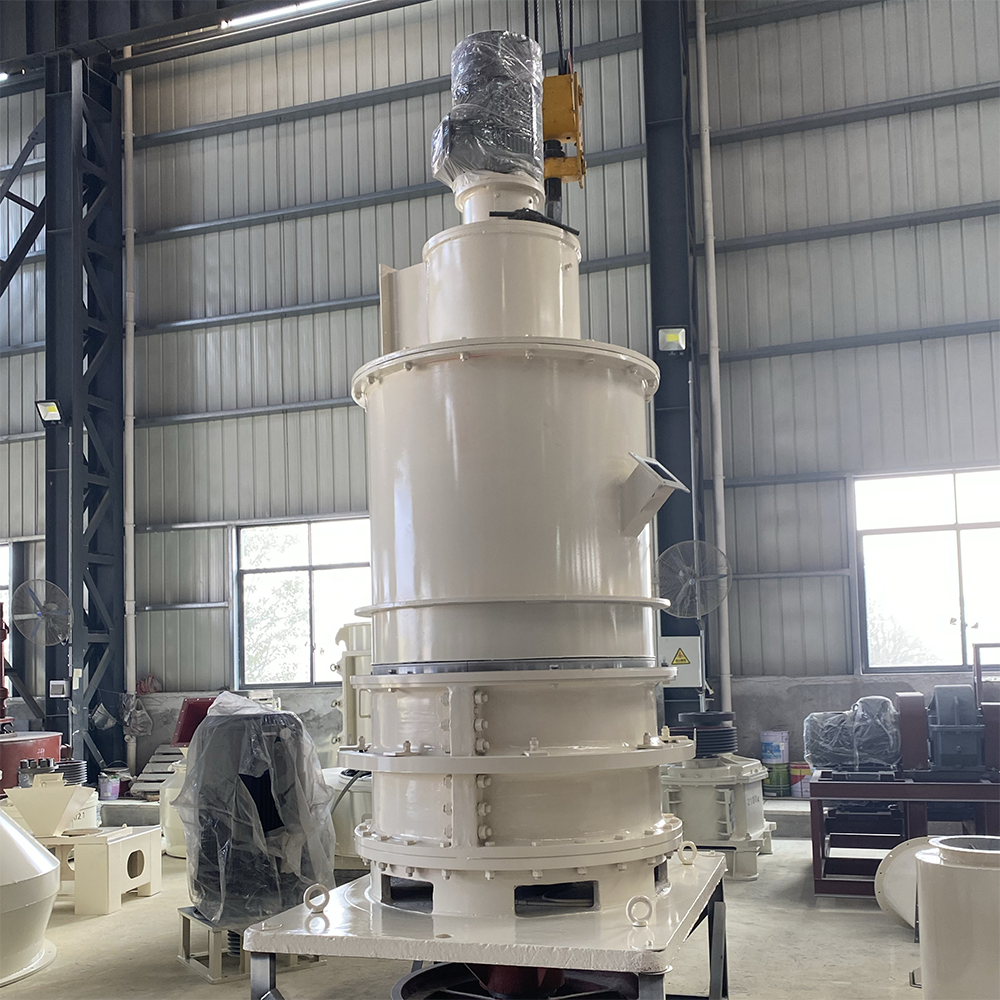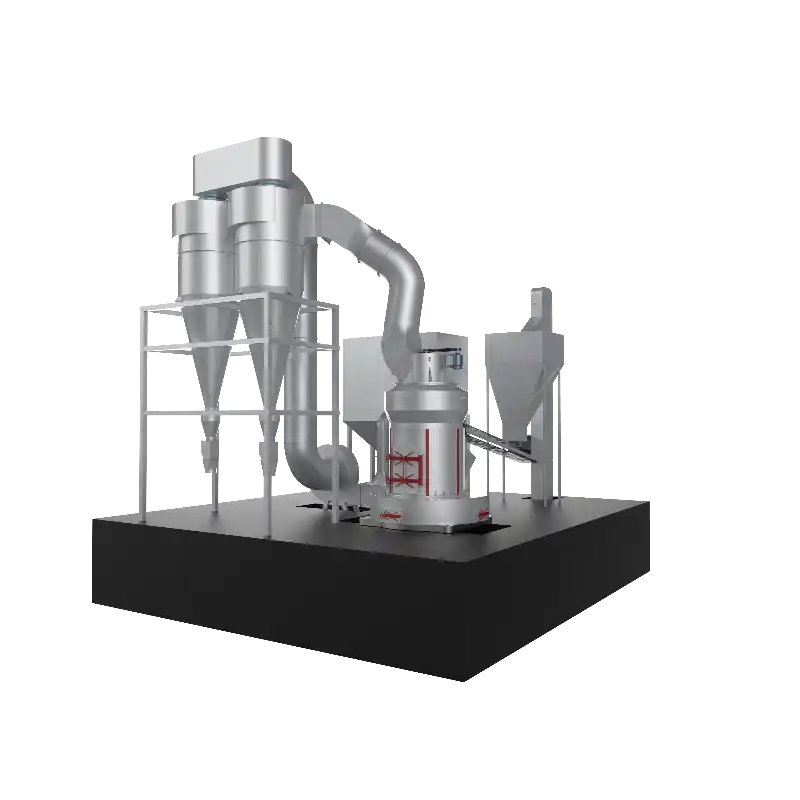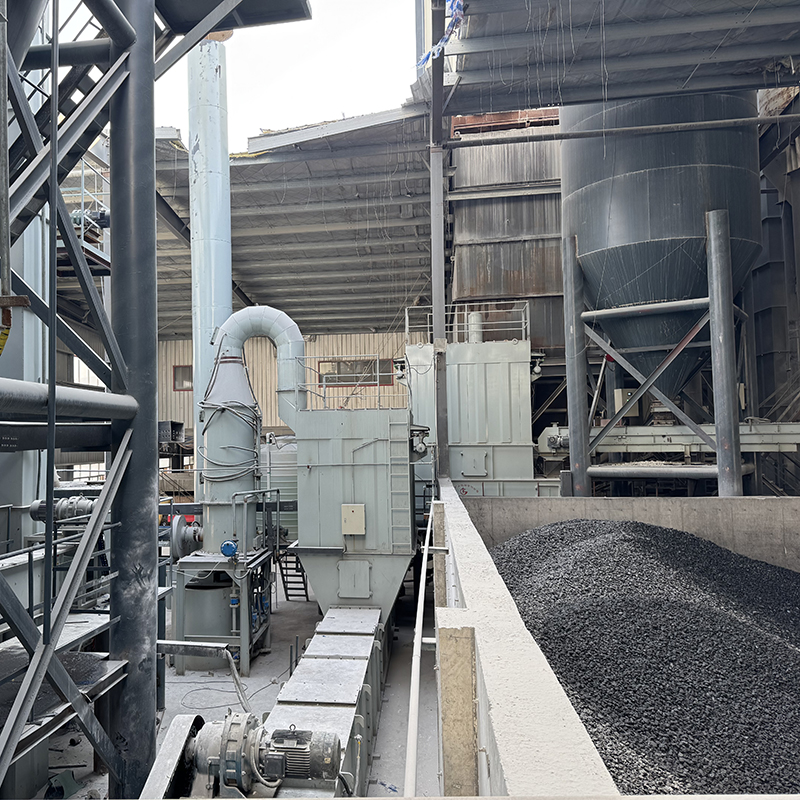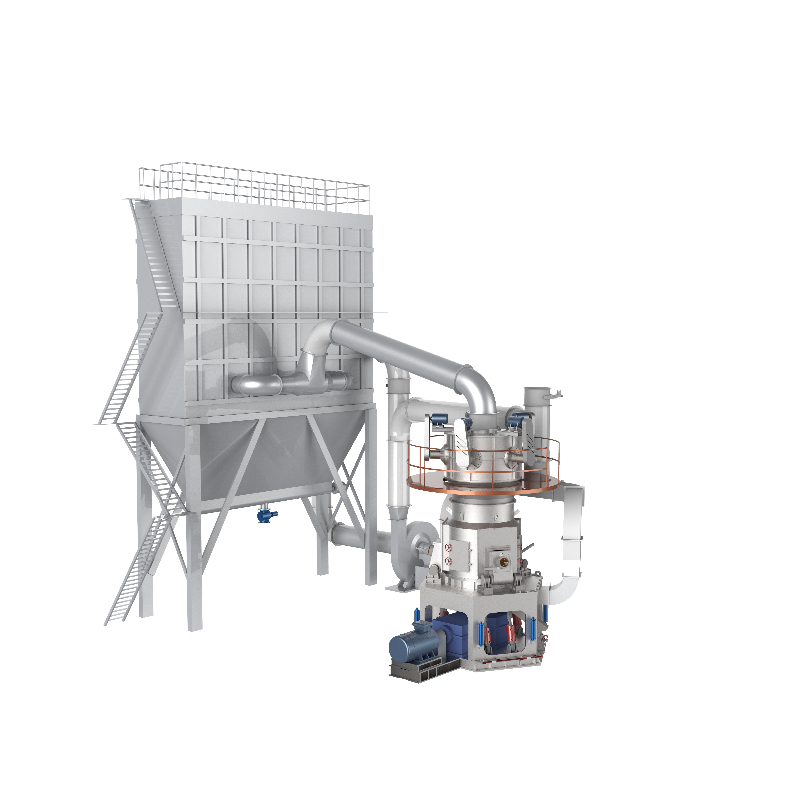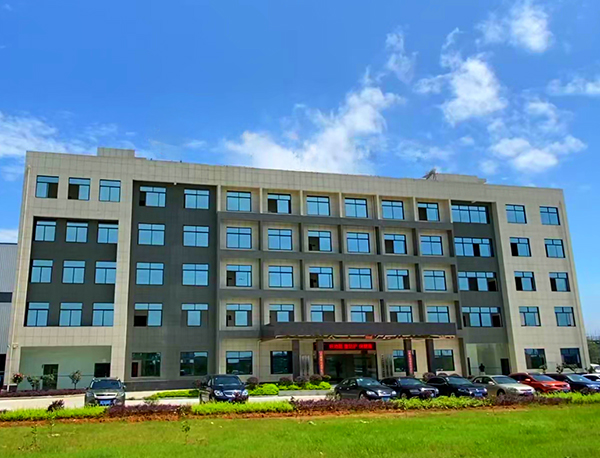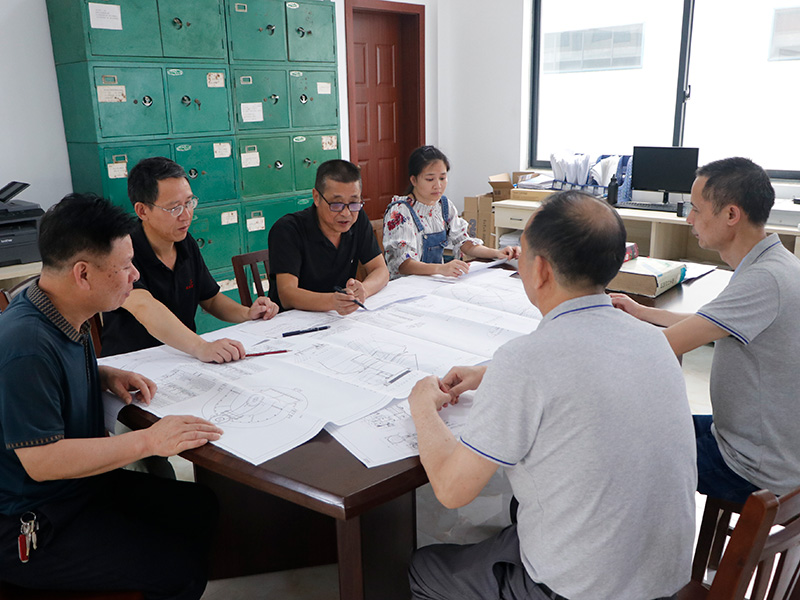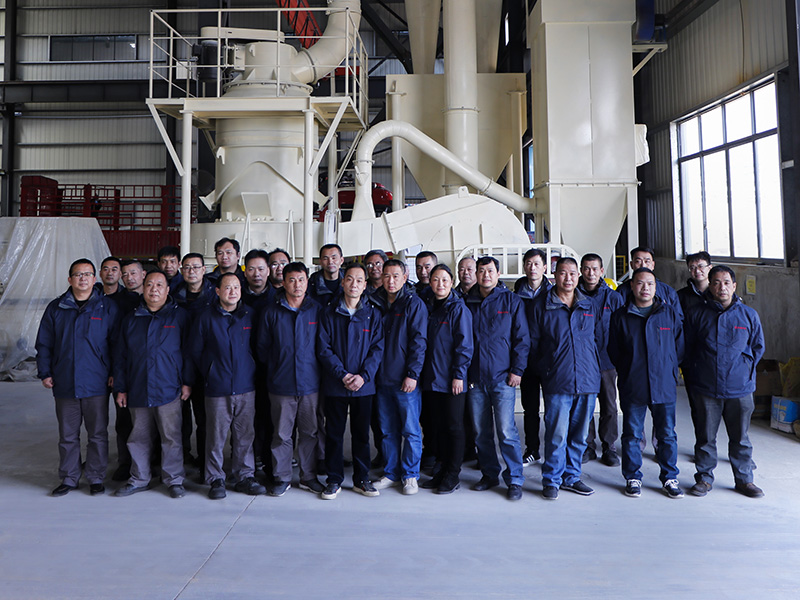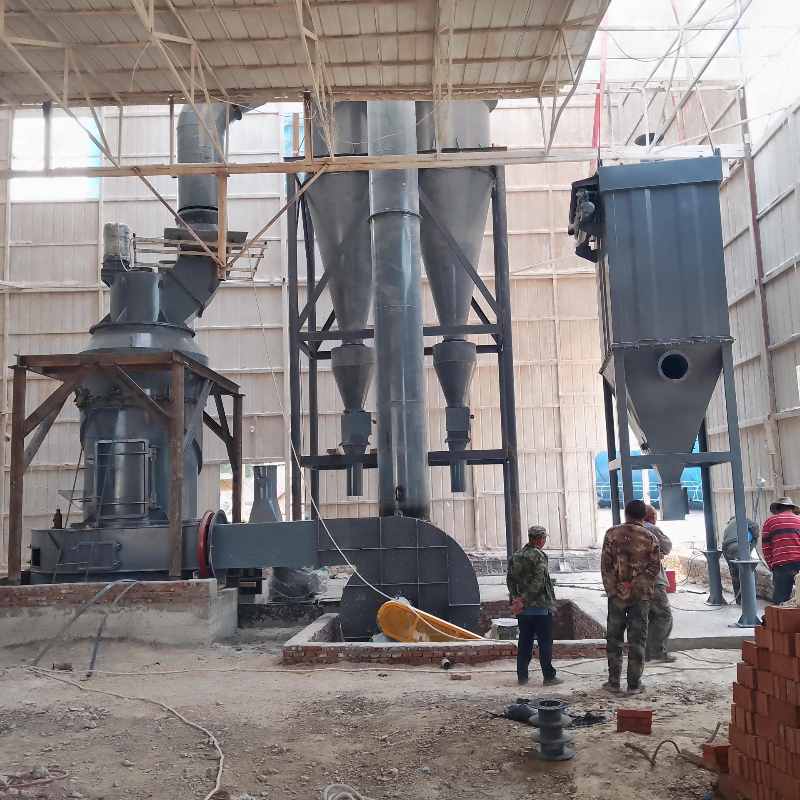
The medical stone Raymond mill process involves a systematic production process that uses a Raymond mill to process raw medical stone into powders of varying mesh sizes. This process primarily involves crushing, grinding, grading, and collection. The following is a detailed description of the process flow:
I. Raw Material Preparation and Crushing
- Raw Material Screening: The raw medical stone ore undergoes preliminary screening to remove impurities and large, non-target minerals to ensure pure feed material.
- Crushing: Large pieces of medical stone (typically ≤30mm) are coarsely crushed in a jaw crusher or cone crusher to a particle size that meets the Raymond mill feed requirements (generally ≤20mm) in preparation for subsequent grinding.
II. Grinding Stages
- Main Mill Grinding:
The crushed material is fed by an elevator into a storage hopper and evenly fed into the main mill chamber of the Raymond mill via a vibrating feeder.
Within the grinding chamber, a scraper scoops up the material and feeds it between the grinding rollers and grinding rings. The grinding rollers, under the action of centrifugal force, crush the material into a fine powder through compression and friction.
- Air Separation and Classification:
A blower blows air into the bottom of the grinding chamber, carrying the pulverized material into the analyzer. The rotating blades in the analyzer generate centrifugal force, which forces larger particles, due to their weight, back into the grinding chamber for re-grinding.
Fine powder that meets the required particle size is transported with the airflow into the cyclone collector for initial separation.
III. Product Collection and Dust Removal
- Product Collection: In the cyclone collector, the fine powder is separated from the airflow and discharged from the discharge port as finished medical stone powder. Screening equipment of varying specifications (e.g., 40 to 2000 mesh) can be configured for further classification as needed.
- Residual Air Treatment and Dust Removal:
Fine powder not captured by the cyclone collector is transported with the airflow into the bag filter. It is filtered through the filter bags and discharged as clean air. The dust is then collected and returned to the system or disposed of centrally to ensure environmental compliance.
The residual air system connects the blower to the main unit via a duct, maintaining negative pressure in the mill and preventing dust from escaping.
IV. Auxiliary Systems and Quality Control
- Automation: A PLC control system monitors equipment operating parameters (such as temperature, pressure, and current) in real time to ensure stable production.
- Humidity and Temperature Management: Moisture content in the grinding chamber or grinding heat can cause evaporation. The system controls humidity through air volume adjustment and residual air circulation to prevent clogging and agglomeration.
- Quality Inspection: Finished powder is tested by a particle size analyzer to ensure it meets the target mesh size (e.g., 800 mesh). Rejected products can be returned to the grinding chamber for regrinding.
V. Environmental Protection and Maintenance
● Equipped with a pulse bag dust removal system, it effectively filters over 99% of dust, meeting environmental emission requirements.
● Regular maintenance of wearing parts such as grinding rollers and grinding rings extends equipment life and ensures continuous production.
Customer site
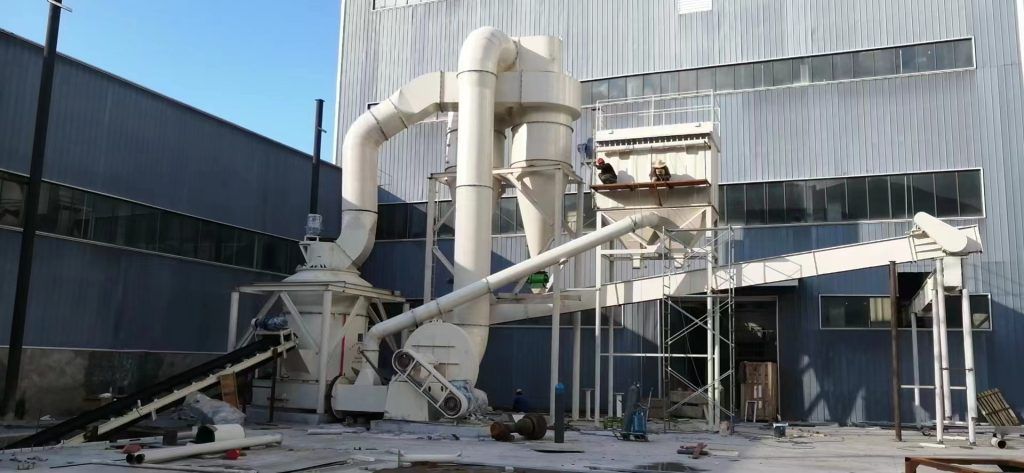
Summary:
The medical stone Raymond mill process achieves efficient powder production through crushing, grinding, grading, and collection. It combines automation, environmental friendliness, and finished product quality control, providing stable raw materials for applications in various fields.

